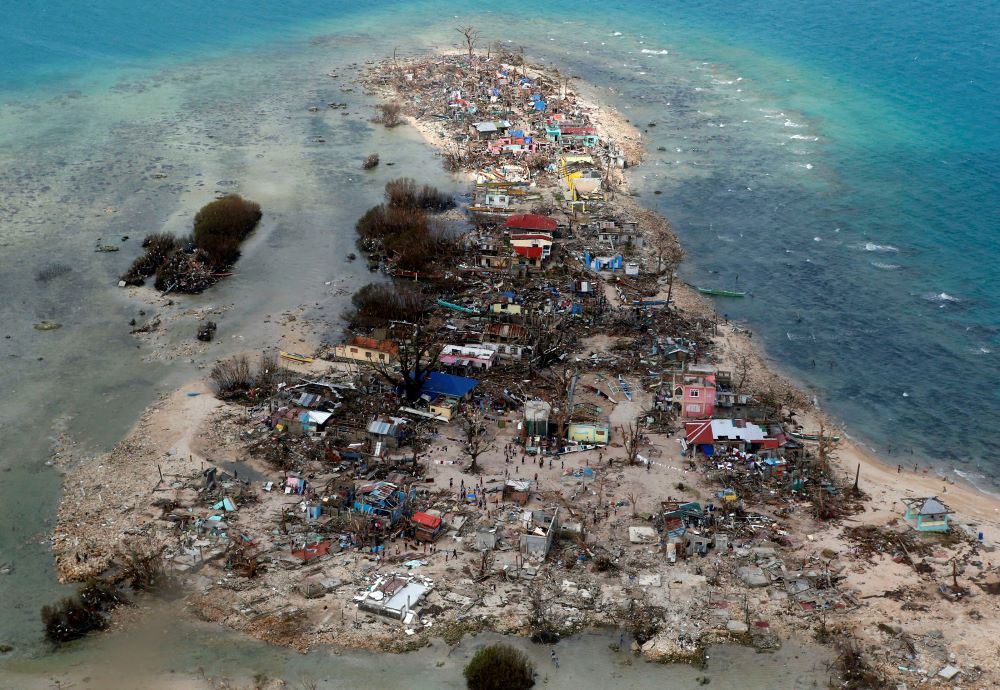John Leo Algo is the national coordinator of Aksyon Klima Pilipinas and the deputy executive director for programs and campaigns of Living Laudato Si’ Philippines. He has represented Philippine civil society at UN climate and environmental conferences since 2016 and also works as a climate and environment journalist.
The Philippines now finds itself in a position to once more shape the global direction of addressing loss and damage (L&D).
More than a decade after the landfall of super-typhoon Haiyan changed how the world responded to the climate crisis, the country will host the board of the Fund for responding to Loss and Damage (FLD) for the next few years. This gives it a leadership role in determining how the Fund will run and function to provide much-needed support to those most affected by typhoons, sea level rise, and other impacts.
This also puts pressure on the national government to not just set the tone for the administration of the Fund, but to prove it can match its global calls for climate justice with policies and solutions at the national level.
Climate accountability
The “Climate Accountability (CLIMA) Bill”, currently filed in the Philippines Congress, aims to accomplish two goals. The first is to hold big businesses accountable for their pollutive actions through stronger integration of the UN Guiding Principles on Business and Human Rights into legal and policy frameworks.
The legislation also seeks to further empower citizens to seek redress against these businesses for harmful practices that cause violations of their human rights, aligned with the “polluter pays” principle.
The second objective is the establishment of a national fund for those seeking support after being hit by extreme climate change impacts. It can be seen as a domestic counterpart to the FLD, which makes how it is structured and operationalized just as important to the country’s strategies at the international scale.
In Hurricane Beryl’s shadow, loss and damage fund makes progress on set-up
If enacted, the proposed legislation would be the first of its kind in the world, serving as a testing ground for some of the critical issues associated with responding to L&D that the rest of the world can follow. One such issue is determining which cases and claims would qualify as “loss and damage” – which is currently a subject of debate at the global level.
Another issue is putting into practice attribution science, which looks at how climate change and the emissions that worsen it trigger and intensify specific extreme weather events. While still an evolving discipline, this will play an important role in determining just how liable polluters are for causing disastrous storms like Haiyan.
Adapting current policies
At the moment, there is no primary climate-related L&D policy in the Philippines. While mechanisms do exist for accounting for losses and damages, these largely cover the impacts and costs of extreme weather events, especially from typhoons and flooding.
These mechanisms are also more oriented for assessing disasters that are not always climate-related and may not be suitable for assessing the impacts of slow onset events like sea level rise. Furthermore, they are not able to fully capture non-economic costs, such as loss of ecosystem services, impacts on mental health, and loss of cultural heritage.
Sign up to get our weekly newsletter straight to your inbox, plus breaking news, investigations and extra bulletins from key events
Along with the CLIMA Bill, the time for a national L&D policy to respond to the climate crisis has never been better than in the next few months. The Philippine government has been actively updating its climate strategies, such as the National Adaptation Plan and an implementation plan for its Nationally Determined Contribution (NDC) under the Paris Agreement.
Any new law or policy responding to L&D must be in sync with strategies for adaptation and reducing emissions, along with the country’s positions at the Fund’s board and in other global decision-making processes. It must also effectively translate the global urgency of addressing L&D into potential interventions at the national level.
Widening the responsibility net
The L&D narrative has been largely anchored on developed countries and fossil fuel corporations needing to be held accountable for causing the climate crisis. Moving forward, this must continue to be upheld in global decision-making processes as the most vulnerable continue to seek and obtain justice.
In a world first, Grenada activates debt pause after Hurricane Beryl destruction
Nonetheless, as L&D can be interpreted as climate risks and impacts that are beyond existing capacities for adaptation and mitigation, it means that accountability could also be applied to national and local governments, financiers of fossil fuel-related operations, entities spreading climate disinformation, and others that are enhancing these climate risks, impacts, and vulnerabilities.
Through its statements at the global level and its new policies at the national level, the Philippines could pave the way for a new era in L&D governance. The process will not be easy. Big businesses, local or global, could insinuate that a new climate policy would hurt the economy. Finding enough funding or setting the criteria for who receives support will be difficult.
Whatever it does, the world will be watching.
